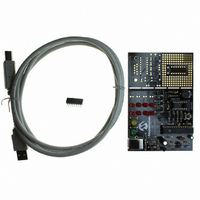DV164101 Microchip Technology, DV164101 Datasheet - Page 47

DV164101
Manufacturer Part Number
DV164101
Description
KIT DEV PICKIT1 FLASH 8/14PIN
Manufacturer
Microchip Technology
Series
PICkit™ 1r
Type
MCUr
Specifications of DV164101
Contents
PIC Kit 1 Circuit Board, CD-ROMs, USB Interface Cable and Booklet
Processor To Be Evaluated
PIC12F675
Interface Type
USB
Silicon Manufacturer
Microchip
Core Architecture
PIC
Core Sub-architecture
PIC12, PIC16
Silicon Core Number
PIC12F, PIC16F
Silicon Family Name
PIC12F6xx, PIC16F6xx
Rohs Compliant
NA
Lead Free Status / RoHS Status
Lead free / RoHS Compliant
For Use With/related Products
Microchip's 8-14 Pin FLASH Microcontrollers
For Use With
AC164122 - BOARD DAUGHT PICTAIL SD/MMC CARDAC164120 - BOARD SIGNAL ANALYSIS PICKIT
Lead Free Status / Rohs Status
Lead free / RoHS Compliant
Other names
DV164101R
DV164101R
DV164101R
Available stocks
Company
Part Number
Manufacturer
Quantity
Price
Company:
Part Number:
DV164101
Manufacturer:
Microchip Technology
Quantity:
135
C.3.1.2
SWITCH FILTER DEBOUNCE
There are situations when both stable switch states must be recognized. It is
undesirable for immediate action to occur if the switch intermittently leaves either the
pushed or released state. A door open or closed sensor switch is a good example of
this. If the door is closed and gets bumped, then the door-open action, such as an
alarm, should not occur because the door is still closed.
The Switch Filter Debounce method delays the response to a changed switch state.
Delay time can even be extended to several times the bounce period. Switch Filter
Debounce incorporates a saturating up/down counter. (A saturating counter is one that
stops counting when the maximum, or minimum, number is reached.) The counter
counts up when the switch is closed, and counts down when the switch is open. The
appropriate action is invoked when the counter reaches either the full up or down count.
Hysteresis is built into the count length. Switch release or contact action is invoked only
upon the first occurrence of counter saturation. The counter must saturate at the
opposite state before the previous state can be re-invoked. During switch bounce, the
counter intermittently counts up and down. The counter will progress up when the
average closed to open period favors contact, and down when the average period
favors release. The faster the switch settles in the closed or open state, the faster the
counter will reach the corresponding saturated condition.
Switch Filtering assumes, when the switch is mostly closed or open, the bouncing will
favor the closed or open levels respectively. It is possible for the counter to saturate
before the switch has stopped bouncing. It is unlikely that the counter will change
saturation state unless the count is too short, or the switch is headed in that direction.
Figure C-4 outlines the software actions necessary to implement the Switch Filtering
Debounce method.
2004 Microchip Technology Inc.
DS40051D-page 43












